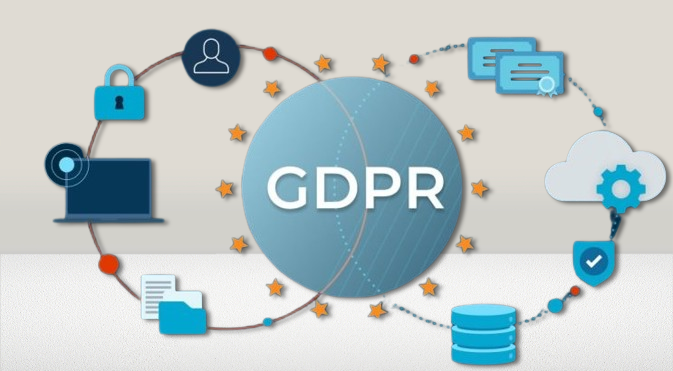Understanding and Implementing GDPR Compliance
Understanding and Implementing GDPR Compliance
In today's digital age, data privacy is more crucial than ever. The General Data Protection Regulation (GDPR) stands as a beacon of data protection, safeguarding the personal information of individuals within the European Union (EU). Since its enforcement on May 25, 2018, GDPR has set the standard for data privacy laws globally. Understanding and implementing GDPR compliance is not just a legal obligation but also a commitment to respecting the privacy of individuals.
What is GDPR?
The GDPR is a comprehensive data protection regulation designed to give EU citizens control over their data. It applies to all organizations operating within the EU, as well as those outside the EU that offer goods or services to or monitor the behavior of EU citizens. The regulation aims to:
- Enhance data protection rights for individuals.
- Simplify the regulatory environment for international business.
- Hold organizations accountable for data breaches and mishandling.
Key Principles of GDPR
GDPR is built upon seven key principles that guide the processing of personal data:
- Lawfulness, Fairness, and Transparency: Data processing must be lawful, fair, and transparent to the data subject.
- Purpose Limitation: Data should be collected for specified, explicit, and legitimate purposes and not further processed in a manner incompatible with those purposes.
- Data Minimization: Data collected should be adequate, relevant, and limited to what is necessary for the intended purpose.
- Accuracy: Data must be accurate and kept up to date.
- Storage Limitation: Data should be kept in a form that permits the identification of data subjects for no longer than necessary.
- Integrity and Confidentiality: Data should be processed in a manner that ensures appropriate security.
- Accountability: The data controller is responsible for and must be able to demonstrate compliance with the GDPR principles.
Understanding Personal Data and Processing
Personal Data: Any information relating to an identified or identifiable natural person. This includes names, identification numbers, location data, online identifiers, and factors specific to the physical, physiological, genetic, mental, economic, cultural, or social identity of that person.
Processing: Any operation performed on personal data, such as collection, storage, use, transfer, or deletion.
Steps to Implement GDPR Compliance
Implementing GDPR compliance involves several critical steps:
1. Data Audit
Conduct a thorough audit to identify what personal data is collected, processed, stored, and shared. Understand the flow of data within the organization and with third parties.
2. Appoint a Data Protection Officer (DPO)
If required, appoint a DPO to oversee GDPR compliance. The DPO should have expert knowledge of data protection laws and practices.
3. Update Privacy Policies
Revise privacy policies to ensure they are transparent, accessible, and understandable. Clearly outline how data is collected, used, stored, and shared.
4. Ensure Data Subject Rights
Ensure mechanisms are in place to uphold the rights of data subjects, including the right to access, rectify, erase, restrict processing, data portability, and object to processing.
5. Implement Data Protection Measures
Adopt appropriate technical and organizational measures to protect personal data. This includes encryption, anonymization, and regular security assessments.
6. Data Breach Response Plan
Develop a robust data breach response plan. Ensure that data breaches are reported to the relevant supervisory authority within 72 hours and that affected individuals are notified without undue delay.
7. Conduct Regular Training
Provide regular GDPR training to employees to ensure they understand their roles and responsibilities in data protection.
Challenges in GDPR Compliance
Implementing GDPR can be challenging, especially for organizations new to data protection. Some common challenges include:
- Complexity of Regulations: Understanding the detailed and extensive requirements of GDPR.
- Data Mapping: Identifying all data touchpoints within the organization.
- Resource Allocation: Allocating sufficient resources for compliance measures.
- Third-Party Management: Ensuring third-party vendors comply with GDPR standards.
Benefits of GDPR Compliance
Despite the challenges, GDPR compliance offers several significant benefits:
- Enhanced Trust: Demonstrating a commitment to data privacy can build trust with customers and partners.
- Reduced Risk of Data Breaches: Implementing strong data protection measures reduces the risk of data breaches.
- Legal Compliance: Avoiding hefty fines and legal penalties associated with non-compliance.
- Competitive Advantage: Being GDPR compliant can provide a competitive edge, especially in the EU market.
Tools and Technologies for GDPR Compliance
Several tools and technologies can assist in achieving GDPR compliance:
1. Data Mapping Tools
Data mapping tools help visualize and understand data flow within the organization, identifying data sources, storage locations, and sharing points.
2. Consent Management Platforms (CMP)
CMPs manage user consents and preferences, ensuring that data processing activities are transparent and consent-based.
3. Data Protection Impact Assessments (DPIA) Tools
DPIA tools assess the potential impact of data processing activities on individuals' privacy, helping to identify and mitigate risks.
4. Encryption Solutions
Encryption tools secure personal data by converting it into a format that is unreadable without a decryption key, ensuring data confidentiality.
5. Incident Response Platforms
Incident response platforms streamline the process of responding to data breaches, ensuring timely reporting and remediation.
Real-World Examples of GDPR Compliance
Example 1: Microsoft
Microsoft has implemented robust GDPR compliance measures, including updating its privacy policies, enhancing data security, and offering GDPR-compliant tools for its customers. They also provide detailed documentation and support to help organizations achieve compliance.
Example 2: Airbnb
Airbnb revised its data practices to ensure GDPR compliance by implementing stronger user consent mechanisms, enhancing data subject rights, and providing clear and transparent privacy notices.
Conclusion
GDPR compliance is a journey that requires ongoing effort and commitment. By understanding the principles and requirements of GDPR, conducting thorough data audits, implementing robust data protection measures, and fostering a culture of privacy, organizations can not only achieve compliance but also build trust with their stakeholders and enhance their reputation. Embracing GDPR as an opportunity rather than a burden can lead to better data practices and a more secure digital environment for all.


